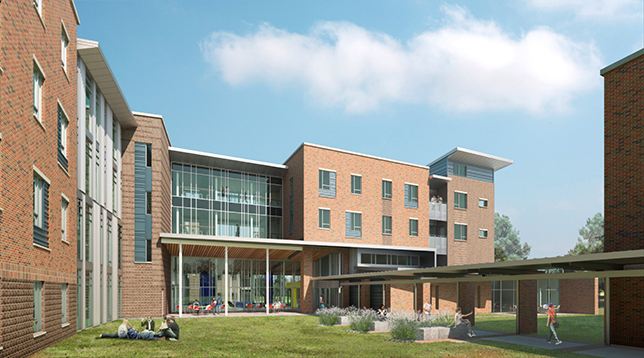La. Public Residential School Opens First Residence Hall
The Louisiana School for Math, Science and the Arts (LSMSA), a Blue-Ribbon boarding school for high-school students located in Natchitoches, La., opened its first on-campus residence hall this week. The 110,000-square-foot Living Learning Commons (LLC) will house 360 students from 41 of the state’s 64 parishes, according to local news. The school graduated its first class in 1985, but until now, the school has partnered with adjacent Northwestern State University to house students in two university facilities, Caddo Hall and Prudhomme Hall.
“They’re excited,” said LSMSA executive director Dr. Steve Horton. “I think the ones who lived in Caddo and Prudhomme are probably the most excited because they knew what they had before and what they’re moving to.”
LSMSA’s agreement with NSU was originally supposed to be temporary. The five-year agreement turned into more than 35 due to a lack of funding, according to a news release. The school broke ground on a residence hall of its own in 2019 thanks to $25 million from the State of Louisiana, according to a news release.

Photo Credit: Tipton Associates
The four-story facility is made up of three towers: Caddo for girls, Prudhomme for boys and Bossier as an overflow tower that will alternate each year. Amenities include a fully stocked kitchen, game room and a commons area on every floor. Changes from the previous living situation include a flat-rate student fee for laundry instead of coin-operated machines, as well as decreasing the occupancy of each suite area from six to four.
The LLC was jointly designed by Ashe Broussard Weinzettle and Tipton Associates. The general contractor was Ratliff Companies.
Horton took distinct pride in the school’s newfound independence. “We’re our own campus,” he said. “We are now just proudly adjacent to the Northwestern campus.”
He also credited the long-overdue construction to Governor John Bel Edwards. “They saw what the students were living in. I think they realized that the state owed this population what was promised to them 30 years ago and saw fit to find the money to fund this dream that’s been in place—and a plan that’s been in process—for a very long time,” said Horton.
LSMSA is a public, residential high school for students in grades 10–12.
About the Author
Matt Jones is senior editor of Spaces4Learning. He can be reached at [email protected].